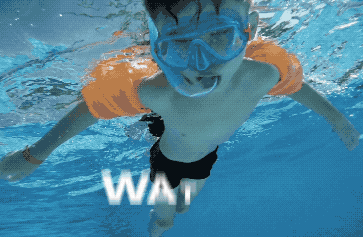
 A pool party is a staple of summer fun, and what better way to amp up the excitement than with some classic pool games? In this guide, we will introduce five popular pool games: Marco Polo, Sharks and Minnows, Water Polo, Chicken Fight, and Treasure Hunt. For each game, we’ll cover the setup, rules, popular variations, and the recommended number of players. Whether you’re looking to spark some friendly competition or just have a laugh, these games are sure to make a splash at your next pool gathering.
A pool party is a staple of summer fun, and what better way to amp up the excitement than with some classic pool games? In this guide, we will introduce five popular pool games: Marco Polo, Sharks and Minnows, Water Polo, Chicken Fight, and Treasure Hunt. For each game, we’ll cover the setup, rules, popular variations, and the recommended number of players. Whether you’re looking to spark some friendly competition or just have a laugh, these games are sure to make a splash at your next pool gathering.
Marco Polo
How It Is Played: The classic game of Marco Polo is akin to a watery version of tag. One player is designated as “It” and closes their eyes, trying to tag the others by following their voices. The player who is “It” shouts “Marco,” and the others must respond with “Polo,” helping the seeker to track them down by sound alone.
To initiate the game, select one player to take on the role of “Marco.” This player will be tasked with closing their eyes and seeking out the others solely through the sense of sound.
Once “Marco” is chosen, have them stand in the middle of the pool with their eyes closed. The rest of the players, scattered around the pool, are the elusive “Polos.” The game commences with “Marco” calling out the famed phrase “Marco!” to which all the “Polos” must respond with a hearty “Polo!” It’s these echoes of “Polo” that guide the blindfolded “Marco” as they navigate through the waters in search of their friends.
The rules are simple yet pivotal. “Marco” must keep their eyes closed at all times, relying only on the sound of voices and splashes to hone in on the other players. The “Polos,” on the other hand, must respond to “Marco’s” call each time, but can swim away to avoid being caught. If “Marco” manages to tag a “Polo,” that player then takes over the role of “Marco,” and the game continues.
For a fun twist and added challenge, include pool toys or noodles which can be used by “Marco” to extend their reach or by “Polos” to create misleading splashes. It’s these simple rules and room for creativity that make Marco Polo a beloved game, sending ripples of laughter across the pool and making your pool party a splash hit. The blend of strategy, stealth, and a bit of luck ensures that each round is as enjoyable as the last, keeping the spirit of fun alive and kicking under the sun.
Rules and Variations:
- Players must not exit the pool; anyone who does can either be designated as “It” or disqualified, based on house rules.
- Some variations include using pool noodles or other objects to extend the reach of the person who’s “It,” or allowing “It” to open their eyes when they are in the shallow end.
- Ideal Number of Players: 4 to 10
Sharks and Minnows
How It Is Played: One player is designated the Shark and starts in the middle of the pool. The other players, the Minnows, start at one end of the pool. The goal is for the Minnows to reach the other end of the pool without being tagged by the Shark.
To begin, select one player to be the Shark. The Shark starts in the middle of the pool while the rest of the players, known as Minnows, line up at one end of the pool. The objective for the Minnows is to reach the other side of the pool without being tagged by the Shark. On the flip side, the Shark’s goal is to tag as many Minnows as possible before they reach safety on the other side.
Kickstart the game with a signal, like a whistle or a shouted “Go!” This is the cue for the Minnows to dash across the pool while the Shark thrashes around trying to tag them. Each round of the game intensifies as the tagged Minnows join the ranks of the Sharks, increasing the challenge for the remaining Minnows in the subsequent rounds.
The game continues with more rounds, each starting with the Minnows at one end and the ever-increasing band of Sharks in the middle. The fun keeps rolling until all Minnows are caught, or you decide to wind down the game and crown the surviving Minnows as the victors.
Sharks and Minnows is a game of strategy, speed, and a splash of daring, where every round brings new excitement and challenges. The simplicity of setup and the easy-to-follow rules make it a fantastic choice for players of all ages.
Rules and Variations:
- Once a Minnow is tagged, they become a Shark and help tag other Minnows in subsequent rounds.
- A variation could include a safe zone where Minnows can rest, or assigning different roles with special abilities to players.
- Ideal Number of Players: 6 to 15
Water Polo
How It Is Played: Water Polo is a team sport played in water, with the objective of scoring by throwing a ball into the opposing team’s goal.
Setting up a game of Water Polo requires a bit of preparation to ensure a fun and fair match. First, you’ll need a suitable playing area – a pool with a length of at least 25 meters and a clear division between shallow and deep ends. You’ll then need two goals, which can be floating or attached to the sides of the pool, placed at each end. Now, onto the fun part: splitting everyone into two teams. Each team should have seven players, including one goalkeeper to guard the goal.
Before the game starts, make sure everyone knows the basic rules. Players are not allowed to touch the bottom of the pool – they must tread water the whole time. They can move the ball by throwing it to a teammate or swimming while pushing the ball in front of them. However, only the goalkeeper is allowed to catch the ball with both hands; field players must use one hand.
Now, let’s get the game rolling! Toss the ball into the center of the pool to kick off the match. The teams now vie for control of the ball, aiming to hurl it into the opponent’s goal. It’s a test of endurance, coordination, and teamwork as players dart through the water, strategize their passes, and aim to outscore the opposition. The game can continue for a set period, like two halves of 15 minutes each, or until a certain score is reached.
Having a pool with one shallow end and one deep end can create an unfair advantage in a game of water polo. The team on the shallow end may have an easier time as they can touch the bottom of the pool to rest, regain their balance, or gain extra leverage when throwing the ball or defending the goal. On the other hand, the team in the deep end has to continuously tread water which can be exhausting, especially over a long period.
A common way to handle this discrepancy and keep the game fair is to switch ends at halftime, so both teams experience both sides of the pool. This way, any advantage or disadvantage posed by the shallow and deep ends is balanced out over the course of the game.
Another alternative would be to establish ground rules forbidding players from touching the bottom of the pool, although this may be hard to enforce in the shallow end.
In more serious or competitive settings, it’s preferable to have a pool with uniform depth to ensure a level playing field for all participants. However, in a casual or friendly game, the key is to ensure everyone is having fun and the game remains enjoyable and fair, even if the setting isn’t perfect.
Rules and Variations:
- Standard water polo rules apply, but feel free to modify them to suit your pool size and player skill levels.
- Variations might include using floating goals, or different types of balls for added challenge.
- Ideal Number of Players: 14 (7 per team)
Chicken Fight / Shoulder Wars
How It Is Played: Players pair up, with one person riding on the shoulders of their partner. The goal is to knock down other pairs without touching the bottom of the pool or letting the rider touch the water.
Setting up a Chicken Fight tournament can turn your pool party into an epic battle of balance and strategy. Begin by organizing all willing participants into teams of two. One member of each team will be the “bottom” while the other will be the “top.” The “bottom” player will carry the “top” player on their shoulders. The objective of the game is to knock off or unseat the opposing teams’ “top” players without touching the bottom of the pool or falling off their teammate’s shoulders.
To kickstart a tournament, create a bracket to schedule which teams will face off against each other. Start the first round with the first set of teams entering the pool, and on a given signal, the battle begins! Each pair will attempt to unseat the opponents while maintaining their own balance. It’s a blend of offense and defense, as teams decide when to strike and when to evade.
Once a team emerges victorious from their duel, they step out of the pool to await their next match in the bracket. Continue through the bracket until only two teams remain for the final showdown. The excitement escalates with each round as the crowd cheers on their favorites.
To make the tournament more engaging, consider having a referee to ensure fair play, and perhaps even prizes for the victorious team. The playful jousting, splashy tumbles, and the cheer of the crowd make the Chicken Fight tournament a memorable centerpiece of your pool party
Rules and Variations:
- No touching the bottom of the pool or holding onto the sides.
- Variations can include having a referee, or using pool noodles for jousting.
- Ideal Number of Players: 4 to 8 (2 to 4 teams). You only need 2 for a chicken fight.
Treasure Hunt / Scavenger Hunt
How It Is Played: Objects are thrown into the pool, and players race to collect them. The player or team with the most objects at the end of the game wins.
Arranging a Swimming Pool Treasure Hunt is a splendid way to add a splash of adventure to your pool party, especially for kids. Start by selecting an assortment of waterproof treasures – these could be anything from plastic toys, rubber ducks, to specially designed dive toys. Make sure the items are safe for the pool and for the kids. If you have a mixed age group, consider using a variety of items that vary in buoyancy; some that float, some that sink, and some that suspend in the water, to cater to different swimming abilities.
Before the hunt begins, while the kids are safely away from the pool, scatter the treasures throughout the pool. If you have a deep pool, ensure the majority of items are within a depth the kids can safely reach. For an added touch of mystery, you could make a simple treasure map indicating the general areas where treasures are hidden.
Gather the kids and explain the rules. Each kid or team will have a set time to collect as many treasures as they can. Blow a whistle or give a loud signal to kickstart the treasure hunting frenzy. Kids will dash, dive, and paddle around in search of the hidden treasures. The sight of sparkling items through the water will spark excitement as they scramble to collect their loot.
Once the time is up, have the kids gather around and count their treasures. You could add a competitive edge by awarding small prizes or certificates to the child or team who collected the most treasures or found special items.
Rules and Variations:
- Use objects that sink to the bottom, float, or both to vary the difficulty.
- Time-limited rounds, team play, or assigning different point values to objects are all fun variations.
- Ideal Number of Players: 4 to 10







